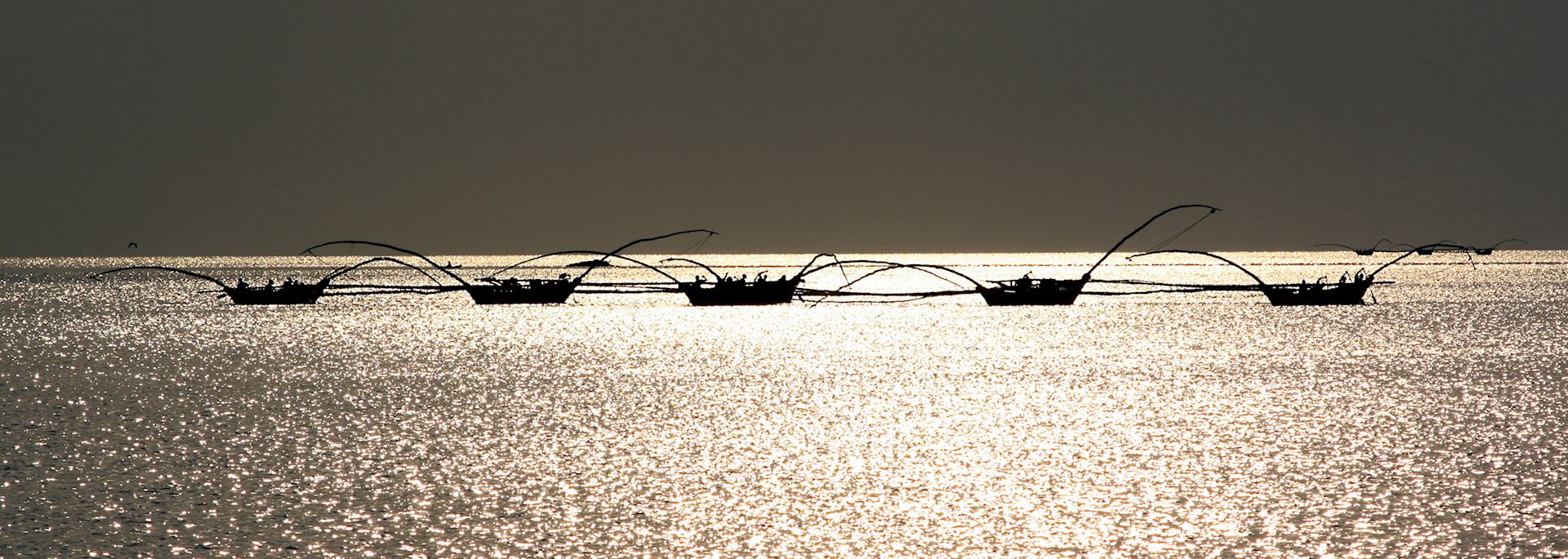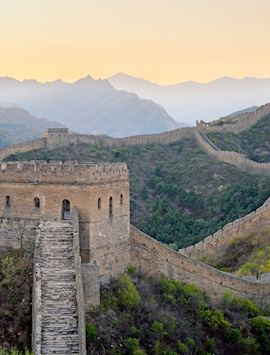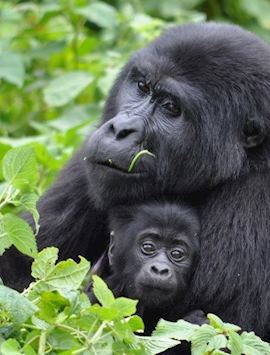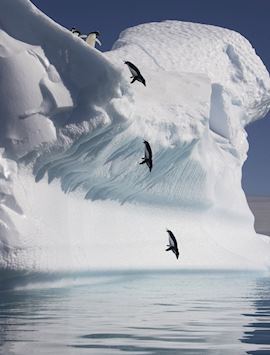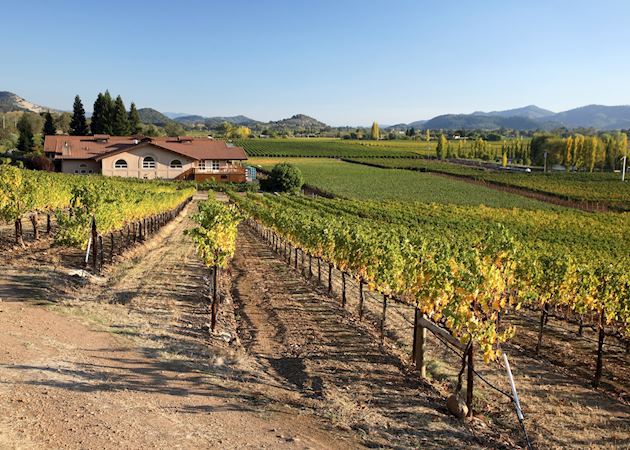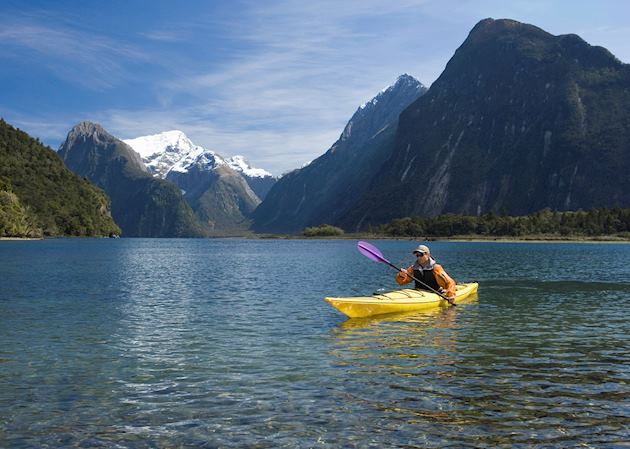Our specialists constantly scour the globe looking for new and interesting ways to explore the places that we love. We work to find both authentic moments that can reveal the soul of a city as well as the most knowledgeable guides who can provide special insight to one-of-a-kind locales.
Here, our specialists talk about the activities that they’re most excited to share with you in 2018. Together they have taken culinary tours of Shanghai’s hole-in-the-wall eateries, explored unique Aboriginal art in northern Australia and heard the fishermen’s songs rolling across Rwanda's Lake Kivu.
Cycle the Shimanami Kaido in Japan, by Becca
One hot sunny day, I mounted my bicycle and headed out on the Shimanami Kaido. Built specifically for cycling, this expressway covers more than 60 km (43 miles) over the longest series of suspension bridges in the world. It connects Japan's main island of Honshu to the island of Shikoku, linking six smaller islands scattered across the Seto Inland Sea.

Because it was designed specifically for them, cyclists will find the route studded with infrastructure to support their trip — a series of rental shops, cycle-through cafés, rest stops and Cycle Hotel, a bicycle-themed hostelry in Onomichi. Riders are protected on their own lanes, keeping them away from cars and offering unobstructed views of the ocean and archipelago.
I started in the middle of the day, a mistake I urge you not to repeat. An experienced cyclist might be able to take the whole route in just five hours, but I wanted to pause for pictures. Next time, I’ll start in the morning to give myself more time to admire the views of green, beach-rimmed islands rising up from the balmy sea.
I pushed through but I could have turned my bicycle into the next rental shop and boarded a bus for the rest of the route — a convenient option for those who don’t want to commit to a lengthy ride. You can also rent electric bicycles to make the trip less taxing, especially on the handful of inclines.
I’ve lived in Japan and toured it many times, but this may have been the best visit I’ve had. The views from the bridges and camaraderie with my fellow cyclists gave me a new perspective on a country I thought I knew well.
Take a food tour of Shanghai, by Lucy
This autumn, I spent an evening exploring culinary Shanghai on a tour of one of China’s many distinct regional cuisines. My guide, Ruixi, provided cheerful and knowledgeable narration as we ate our way through five different spots, offering a delicious introduction to the city’s food.
The tour, which took about two hours, took us from the pretty backstreets of the French Concession to a hole-in-the-wall café tucked into the busy downtown area. We sampled dishes like pork-stuffed snails, fried shrimp, noodles topped with crispy onions and a congee (rice porridge) featuring so-called 1,000-year-old eggs.

A highlight of the trip was a small shop known for its soup dumplings, where I marvelled at the chef’s dexterity, neatly pleating the wrapper into a tidy package around the filling. Ruixi explained that the ‘soup’ was actually a gelatinous broth that had been cooled to near solidity, cut into tiny quivering pieces and mixed in with the pork and spices. When the dumplings were steamed in the traditional bamboo baskets, the gelled bits inside melted into a rich, highly seasoned broth.
If making dumplings is an art, so is eating them and I was grateful to Ruixi for demonstrating the two-step technique. First, you lift the dumpling in a spoon and bite a small hole in the top so you can slurp out the hot liquid inside. Once the dumpling is drained dry, you pop it into your mouth with chopsticks.
Though Ruixi managed the whole process neatly, I discovered that I was better off eating over the basket if I didn’t want to wind up with a lap full of dumpling.
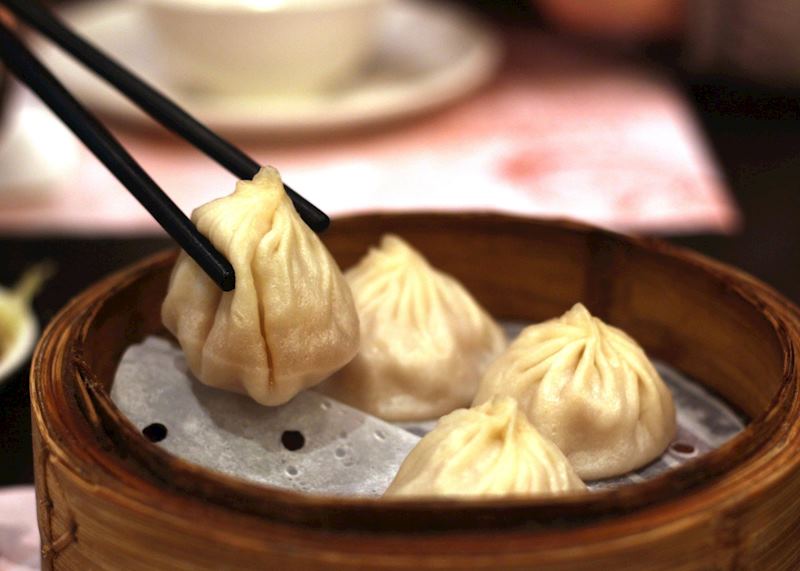
Sail the polar seas on the Silver Cloud, by Jon
Frigid and dark and littered with icebergs, the polar seas are an inhospitable place. But the recently refurbished Silver Cloud expedition ship offers a comfortable — indulgent, even — way to explore these extreme regions.
The ice-hardened ship boasts a full complement of amenities: spacious cabins, a photo studio, a spa, sweeping decks and four restaurants, including a slow-food trattoria and the only Relais & Châteaux restaurant in Antarctica. In the evenings, the ship hosts engaging lectures by experts from around the world. You might hear polar historians, glaciologists, marine biologists or ornithologists who focus on penguins.
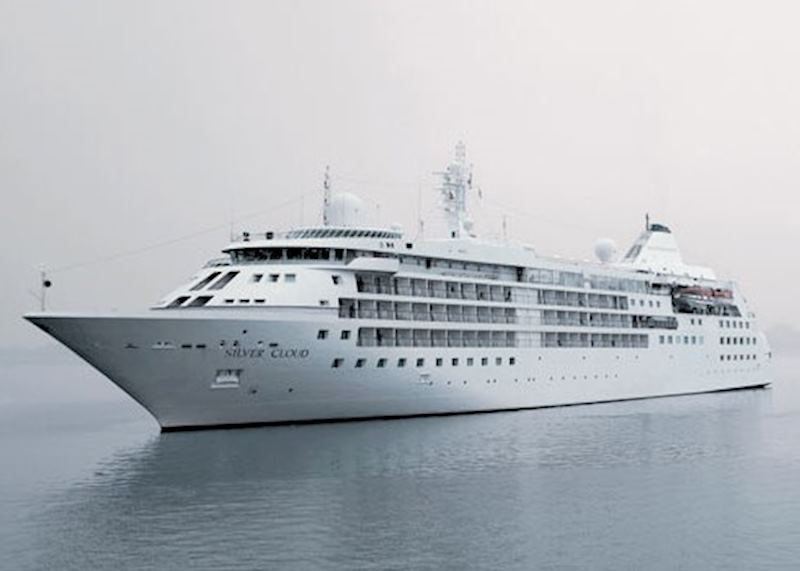
But, of course, the real attraction is the land and seascape outside. Cruising aboard the Silver Cloud, you’ll have many opportunities to get off the ship and enjoy the severe beauty of the polar area. There are 16 zodiacs for small-group trips and ten kayaks that allow you to get very close to the water. You can leave the ship twice a day on outings that range from paddling alongside a breaching humpback to watching comical penguins waddle toward the sea.
Additionally, almost all the cabins have a veranda, offering a private view of the passing sea. You might wake up to the sight of orcas frolicking through the ice-strewn ocean and go to sleep watching an iceberg drifting by in stately silence.
Tour the Aboriginal art of Ku-ring-gai Chase National Park, by Colton
Located about 45 minutes from Sydney, Ku-ring-gai Chase National Park boasts eucalyptus-covered hills, wetlands, coastline, rivers and coves. It also has one of the country’s densest concentrations of Aboriginal sites.
I was here to take an all-day tour with Paul, the only guide allowed to lead visitors to some of the unique rock art in the park. As with everywhere in Australia, the locals haven’t shared much of their lore with outsiders and many questions remain about this region, which hasn’t attracted the same attention as places like Uluru.

The tour begins in Sydney, where Paul picks you up in a bus for the drive north to the park. On the way, he introduces Aboriginal culture and spirituality, as well as some of his own family history. His ancestors were among the earliest European settlers and they mistreated the Aboriginals. To make reparations for his family’s actions, Paul has taken it upon himself to learn about their culture and educate others.
The first site we visited was a stone outcropping pockmarked with hundreds of small divots. Paul explained that some of them were carved as part of a coming-of-age ritual, when boys would painstakingly tap out the hollows as part of their passage into manhood.
The stone was also carved with atavistic Dreamtime images— snakes, fish and emu that seem to transform into humans. These images are associated with the sacred tales that weave together to create the fabric of Aboriginal spirituality, and Paul has learned the stories from two elders of the local Guringai clan.

We then boarded a boat for a cruise to see art that’s only visible from the water. The carvings here — fish and outlines of hands, among others — were less spiritual and more practical, serving as signposts to indicate information like ‘good fishing nearby’.
The outing included lunch on the boat. We ate a trio of ‘bush sliders’ made from beef, emu and kangaroo meat — a fitting culinary complement to this introduction to Australia’s history.
Walk on the Athabasca Glacier, Canada, by Sophie
As I walked from the parking area up to the Athabasca Glacier, I passed a series of markers: ‘The glacier was here in 1908’, then 1925, 1935, 1992…. It was a sobering introduction to this remarkable geological feature.

I was there for a two-hour walk up on the glacier, located a 90-minute drive from Jasper. It was a chance to catch an up-close glimpse of a natural wonder that is literally vanishing.
The cold wind coming off the glacier, however, gave no sign of the warming that has caused the steady retreat. I’d thought I was properly dressed but my guide, Chris, had a windproof layer for me to wear over my warm clothes. He also supplied the crampons that I fitted to my boots. Shortly after starting up the slope, I found myself grateful for both. The terrain was uneven and the crampons gave me the extra stability I needed to keep up with the others on the hike.
The effort was worth it. Standing on the glacier is like being in another world. The wide ice sheet — riven with crevasses and rumpled into uneven furrows — is hemmed in by the bare stone faces of the mountains.
At the edge of a crevasse, I (carefully) peered down into the crack that split the ice. The surface was slightly dingy, the whiteness dimmed slightly by wind-borne dirt, but the depths of the glacier were still pristine, a chasm of blue-white ice.
Chris scooped up one of the fist-sized chunks that dotted the ice field and handed it to me. Cradling it carefully, I was able to make out the individual layers, a record of the seasons accumulated over centuries and compressed into solid form that I could hold in my own hands.
Explore New York City in a classic convertible, by David
With a broad Brooklyn accent and a dapper fedora, Isaac seems perfectly at home behind the wheel of a gleaming, cherry-red 1977 Buick Skylark convertible. I met this lifelong New Yorker over the autumn when he took me on a narrated driving tour of the boroughs and byways of his beloved home town.

With the bluntness that the city is known for, Isaac informed me that this was not a trip with an open agenda. Instead, he’d planned a careful route to mitigate the worst of New York’s omnipresent traffic and road maintenance.
We began with a meandering tour of the irregular roads through Greenwich Village, SoHo, Chelsea and the meat-packing district, with pauses to point out small details I might have missed — a building decorated with cattle as an homage to its past as a slaughterhouse.
Then we headed downtown for a tour of the steel-and-concrete canyons of the Financial District, Wall Street and Battery Park, with a pause to pay our respects at the 9/11 memorial at the Freedom Tower, the former site of the World Trade Center.
Across the Brooklyn Bridge, we visited the fashionable enclaves of Williamsburg and Brooklyn Heights, a hilltop area known for its elegant brownstones. The last stop before returning to Manhattan was at the Brooklyn Heights Promenade, where I took a stroll to admire the panoramic skyline, its imposing skyscrapers basking in the sun.
Enjoy a sunset kayak trip on Lake Kivu, Rwanda, by Shannon
A huge body of water located on the western border of Rwanda, Lake Kivu is untroubled by the likes of crocodiles, venomous snakes and hippo, making it a safe locale for kayakers and fishermen alike.
Each evening, in the gathering dusk, fishermen board their narrow wooden boats and push off onto the lake. The boats cut a striking silhouette, with elongated spars arching off the bow and stern, each almost as long as the boat itself.
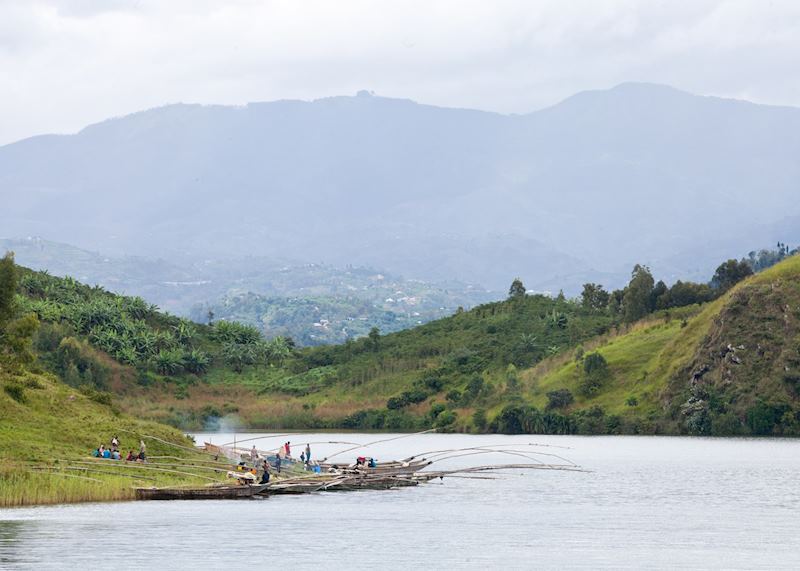
As the flotilla spreads out over the lake, the fishermen sing to each other, their songs rolling across the water. The steady rise and fall of the music helps them keep time with their oars and lets them call encouragement to each other.
The slanting light of the setting sun turns the surface of the lake into a shimmering mirror, reflecting the green hills and the low silhouettes of the fishermen’s boats. Birds call out their evening chorus, the trills and chirps blending with the men’s voices.
Into this scene, you can glide out onto the lake in a kayak, paddling silently and unobtrusively through the songs that echo from boat to boat. The evening trip offers a way to appreciate the lake’s calm beauty as well as providing a window onto a venerable custom.
Take a walking food tour of Como by Chandler
Sitting at the southern edge of Lake Como’s western branch, Como is a prosperous city with medieval roots and modern flair. It’s a lovely place to spend a day wandering aimlessly, but, as with any Italian city, to really know Como you need to try the food. I suggest taking a guided food-themed walking tour of the city’s trattorias, cafés, shops and enotecas (wine shops) to get a glimpse into the culinary soul of the region.
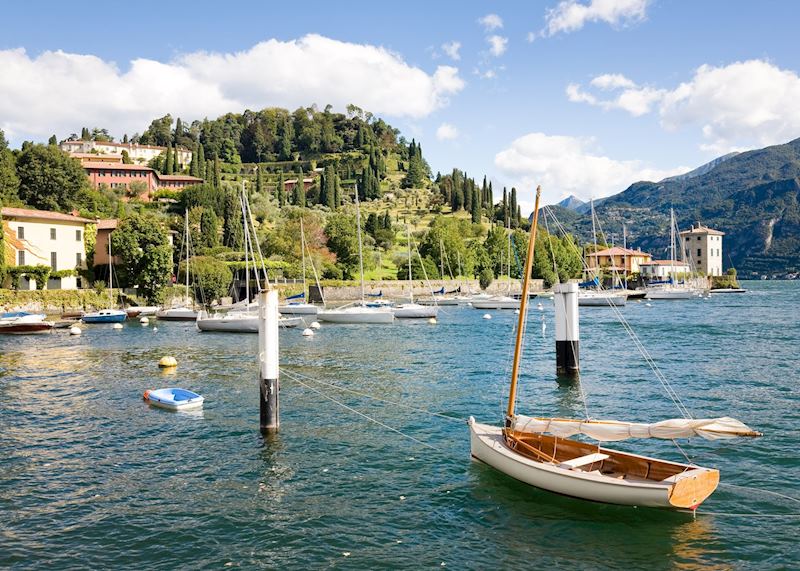
The tour features tastings of the ingredients and dishes that Como is known for. The city is hemmed in by the Alps and the animals that graze in the high mountain pastures are well known for producing milk that results in a complex, nuanced cheese. The bountiful waters of Lake Como offer a feast of fresh fish, and the Lombardy region is known for its sparkling wines. And, of course, there are always plates of luscious pasta, often dressed with butter, cream and cheese.
The two-and-a-half-hour tour also takes in the major sights of the city. Highlights include the marble-clad Duomo, thought to be the last Gothic cathedral built in Italy, and the Broletto, a medieval town hall built from many different shades of stone.
Start planning your trip for 2018
Start thinking about your experience. These itineraries are simply suggestions for how you could enjoy some of the same experiences as our specialists. They're just for inspiration, because your trip will be created around your particular tastes.
Was this useful?


